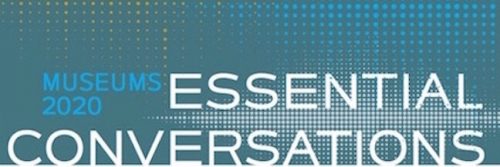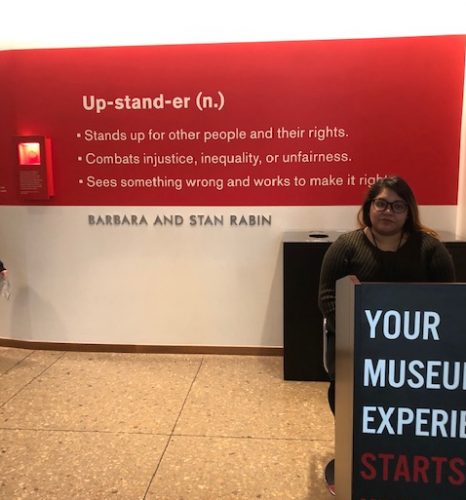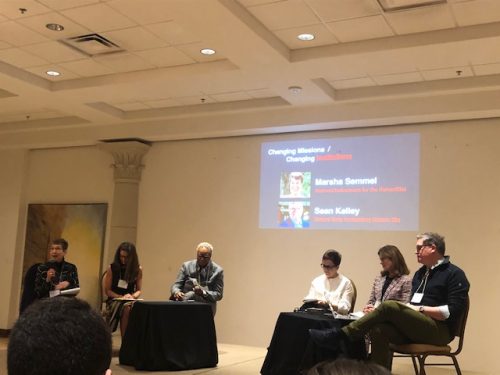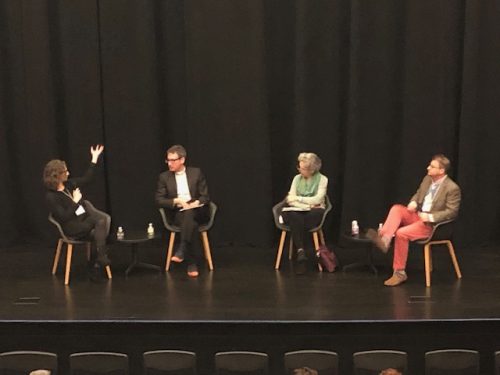CAJM Conference 2020: Essential Conversations

A blog post by Deputy Director Tracie Guy-Decker. Read more posts from Tracie by clicking HERE.
As a part of our professional development JMM staff sometimes attend professional conferences. These convenings of Museum professionals are a great way to learn from (or sometimes kvetch with) our colleagues who face similar challenges at other cultural institutions around the country–or the world. Last week, I was fortunate enough to represent JMM at the annual conference of the Council of American Jewish Museums.



In the opening plenary, a panel of museum professionals and academics – from the Dallas Holocaust and Human Rights Museum, Eastern State Penitentiary, American Jewish Historical Society, American Jewish World Service, Congregation B’nai Jeshurun (NY), and University of Wisconsin, Madison – addressed the guiding question as to what has changed in the past few years. I heard a lot of fascinating observations from these thinkers.

As the conversation in the plenary turned toward immigration and the role Jewish museums have in the debate around immigration, I was fascinated to learn that Emma Lazarus – the creator of the “huddled masses yearning to breathe free” was, in fact, a fifth generation American. I was struck by the assertion that the similarity of Jewish immigration stories to today’s stories are only powerful if we know the older stories. (This truth felt like an important response to Messinger’s earlier point about Jewish audiences believing in the uniqueness of their own stories.) The panel noted the historic familiarity in the distinction between “old” and “new” immigrants. In the late 19th and early 20th centuries, the distinction was often the crux of the division between acculturated, central European Jews and the newer arrivals from eastern Europe. Today, this revived distinction between old and new immigrants is often weaponized against contemporary immigrants especially from south and central America – e.g. the way you sometimes hear in the Jewish community about how “when we immigrated here, we came the ‘right’ way,” regardless of the reality of the actual stories of the speaker’s immigrant ancestors.
In one of the most memorable sessions of my conference experience, the curator from The Sixth Floor Museum (the museum dedicated to JFK’s assassination), a social psychologist, and Mark Zaid, known most recently as the lawyer for the impeachment whistleblower, were on a panel about conspiracy theories, moderated by a journalist from Tablet magazine. In this session, I was introduced to the notion that antisemitism in the 21st century is a kind of a conspiracy theory. This idea notes that many people in today’s world feel threatened by forces outside their control. The social psychologist noted that when people feel threatened, it can amplify the capacity to turn difference into “otherness” and turn the other into a menacing threat.
One of the most fascinating pieces of data in this session for the museum professional came from the psychologist who spoke about evaluation work done with visitors studying museumgoers’ reactions to difficult exhibits, for instance, those about the Holocaust. The psychologist reported that the post-exhibit experiences of museumgoers fell into three categories. Category 1 were the minority, comprising about 10% of total visitors. These visitors were open-minded. They came away from the exhibit moved by what they’d seen and open to the possibility that, if faced with the same situation as those they’d learned about, they might have the capacity to make the same horrible choices. Category 2, about half of the remaining visitors, or 45%, are ambivalent. They are moved by what they saw, but also psychologically move away from what they saw, putting distance between themselves and the content, assuring themselves it could never happen to them. The remaining 45% fall into category 3: closed responses who are not open to the messages of the exhibit at all. These visitors move into a state of denial.
Since one of the key conspiracy theories many Jewish museums work hard to debunk is Holocaust denial, this piece of data feels particularly problematic for us. How do we do our job of exposing the lie of Holocaust denial when our very exhibits can psychologically push about half of our visitors into a state of denial? The session I attended didn’t answer that question for me, but it has stayed on my mind in the days since I heard it. I have been thinking about the idea of the continuum that suggests that as we move out of psychological comfort, we are pushed into stretch zones, and if pushed too far, enter a panic zone. When museums want our visitors to grow, we have to aim for the stretch zone. If we push our visitors into panic, we may have the exact opposite effect of the one we want.
As I flew home to Baltimore from the conference, I realized I had as many questions as I had when I left, though not the same questions. I am excited to bring those questions to my colleagues and to our JMM family.
Questions like:
How do we ensure we are living our values across all aspects of the Museum?
Do we need to review our collections policy vis-à-vis our new mission statement?
What about our education priorities?
How do we measure the effect we have in the world, and how do we hold ourselves accountable for those measures?
How do we ensure we are being true to the dual goalposts of financial stability and mission?
How do we keep all staff, board, and volunteers informed and accountable as we articulate and commit to our new mission, vision, and values?
These are not questions that will be easily answered, and they cannot be answered by one or even two people. I look forward to working through them – and all of the subsequent questions they create – with the JMM team.
